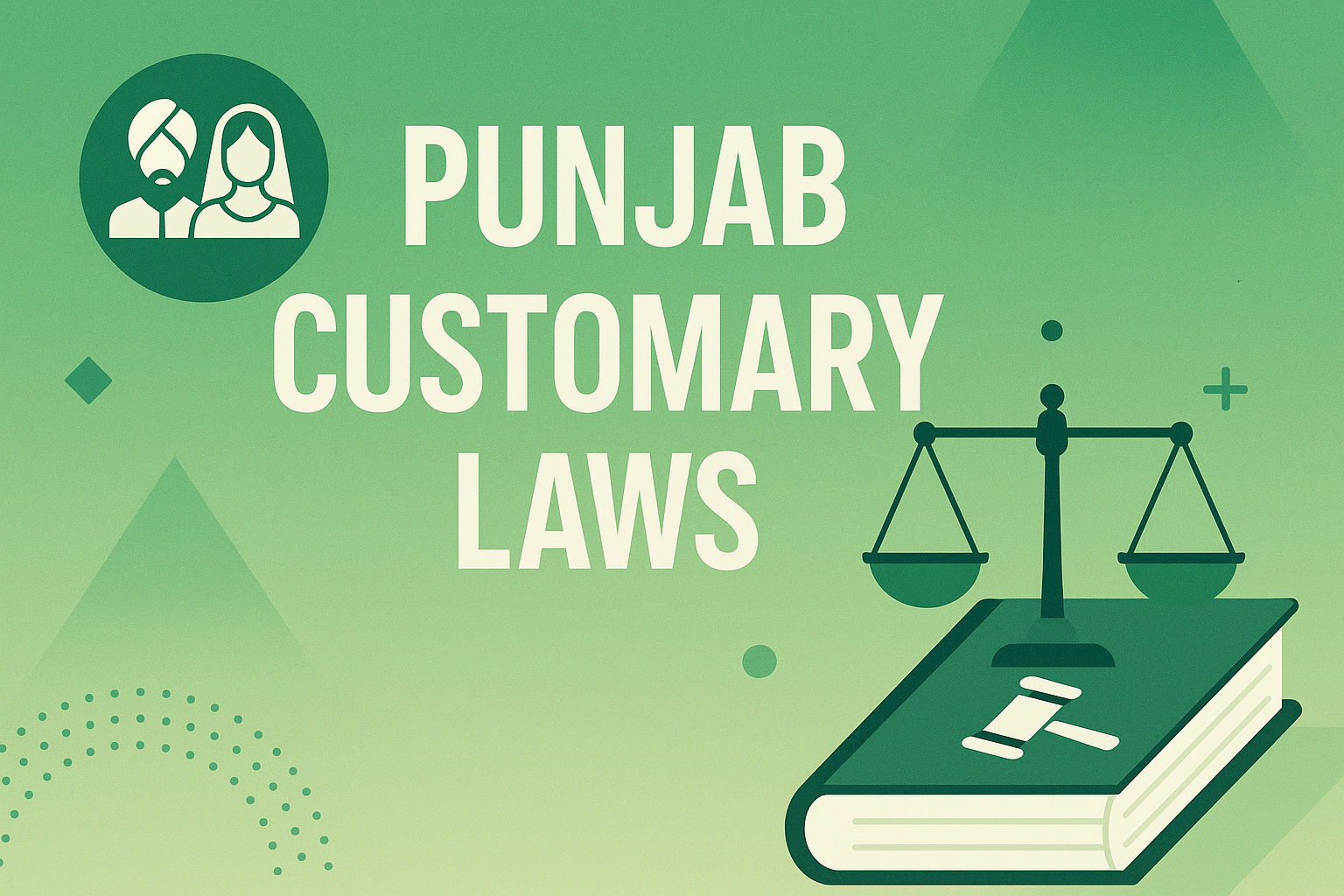Punjab Customary Law, a legal tradition rooted in colonial policy and agrarian patriarchy, occupies a peculiar position in the Indian legal system. Oscillating between statutory law and living custom, its enduring relevance continues to shape property rights, succession, and marital relations, particularly in rural Punjab. This article undertakes an in-depth historical and analytical study of Punjab Customary Law, tracing its evolution, judicial treatment, and contemporary significance in a rapidly modernising legal landscape. Through comparative insights and key precedents, the article argues for a coherent jurisprudence that reconciles custom with constitutionalism.
The Indian legal system is a pluralistic framework, wherein statutory laws, religious prescriptions, and customary norms coexist—often in tension. Among the most distinctive manifestations of this plurality is Punjab Customary Law, which governs critical aspects of civil life including succession, marriage, property alienation, and guardianship. While personal laws based on religion are codified, Punjab’s reliance on customary law, especially among agricultural tribes, has continued into the post-colonial era. The law’s legacy is one of patriarchal entrenchment, yet it also exemplifies the resilience of indigenous practices. This paper interrogates the legitimacy, evolution, and constitutional sustainability of Punjab Customary Law.
COLONIAL GENESIS AND THE CODIFICATION OF CUSTOM
The formal inception of Punjab Customary Law as a distinct legal order can be traced to British colonial efforts to systematize governance in annexed territories. Following the conquest of Punjab in 1849, the colonial administration was faced with the task of resolving disputes among diverse agrarian communities that lacked uniform legal norms. Recognising the futility of transplanting English common law wholesale, the British turned to indigenous customs. The Punjab Laws Act of 1872 emerged as the statutory framework that validated the application of custom over personal law for certain civil disputes. This was further bolstered by the creation of the Riwaj-i-Am—village-wise records of prevailing customs—compiled during land settlement exercises. These records served as quasi-legal instruments, often relied upon in judicial determinations despite questionable authenticity or representativeness.

